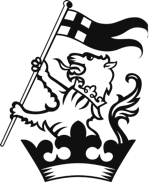In an open letter published earlier this year, more than 100 UK-based artists expressed their frustration at the state of the Arts in British education. Nationally, the Arts are in decline; entries to creative subjects have fallen to their lowest level in a decade. And yet the Arts bring ‘opportunities for personal development in the fields of self-expression, sociability, imagination and creativity’, wrote the artists involved. The World Economic Forum forecasts that, by 2020, creativity will be one of the top three most important skills for future jobs. This summer, Benedict Cumberbatch joined the debate, calling on the Government to take Arts funding seriously. The actor challenged policymakers to consider ‘how to make art inclusive’ and asked, ‘how can consumption be democratised as well as participation?’
It was with these thoughts in mind that I stepped into the Cultural Living Room last night for the official opening of the G.W. Annenberg Performing Arts Centre. With the inauguration of this magnificent, wood-clad building, we have reaffirmed our commitment to the Arts – and with this comes pride, yes, and optimism, but also responsibility.
As I explained to staff and students in the first assembly of term, it is no coincidence that we chose a circular design for our new performing arts centre: the circle represents oneness, togetherness and, above all, community – and by that, I mean both the Wellington community and the wider community of which we are a part. What made last night’s Gala Concert so special was the symphony of different styles, different voices, different schools, different age-groups, all coming together under one roof. Performers from seven local schools and community ensembles joined forces with Wellington students to create a spectacular festival of the performing arts. In time, there will be opportunities for further collaboration: the Cultural Living Room will house Art exhibitions, affording us the space the celebrate creativity in all its forms.
This term, we have explored alternative viewpoints, we have considered the importance of listening to others, and we have acknowledged the power of empathy. The expressive Arts are central to this: actors step into someone else’s shoes; musicians listen to others and work with synchronicity; when we look at a painting, we are looking at the world through someone else’s eyes.
By combining the existing Christopher Lee Theatre with the Cultural Living Room and the Annenberg Auditorium, we have created an exciting and inspiring hub for the Performing Arts, but also a space in which our perspectives will be altered, and our viewpoints challenged.
If this area is our Southbank, then the Annenberg Auditorium is our Globe Theatre, or – as Shakespeare described it in the Prologue to Henry V – our own ‘wooden O’. In the Prologue to Henry V, Shakespeare asks for a ‘muse of fire’ to help transform the stage into the ‘vasty fields of France’; he challenges the audience to use its collective imagination to bring to life ‘horses printing their proud hoofs’ in the earth at the battle of Agincourt. I have no doubt that this space will fire our imaginations and will take us to exciting places in the years to come. Later this year, the stage will be transformed into the streets of New York for ‘Westside Story’, it will become the heathlands of Scotland for ‘Macbeth’ and the corridors of Girton College, Cambridge for ‘Blue Stockings’.
The G.W. Annenberg Performing Arts Centre will provide a venue that is both inclusive and diverse. Dance, drama, music, physical theatre, installations, exhibitions, comedies and tragedies will be appreciated by students, staff, parents, visitors, neighbours, the old and the young.
All these and more we aim to ‘cram within this wooden O’.





